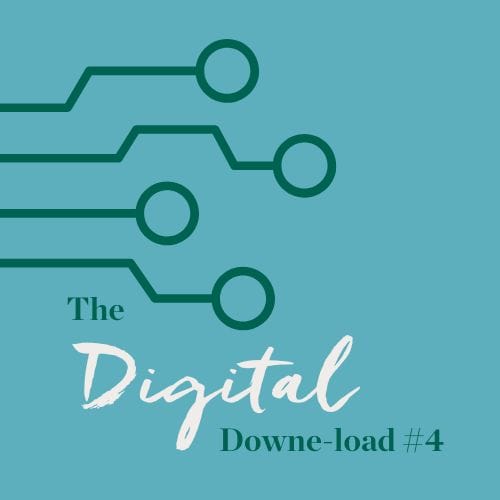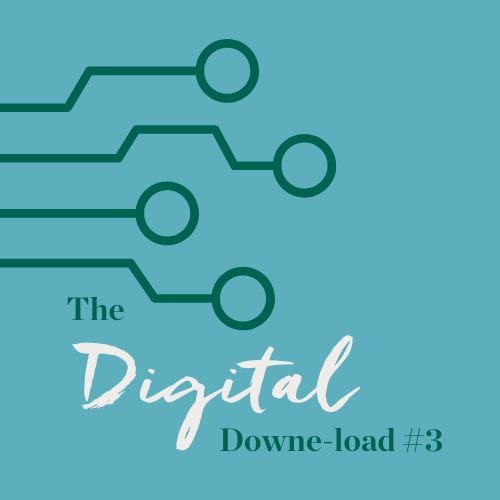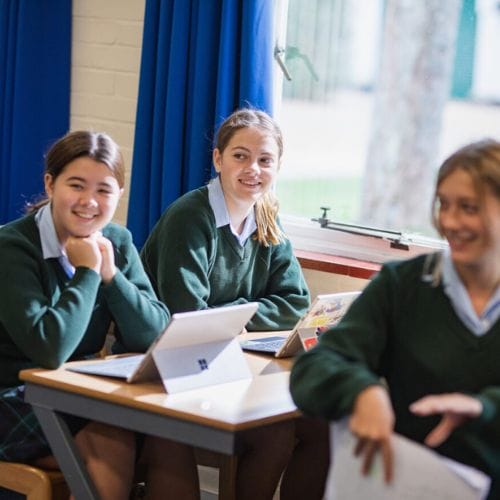
Adolescents heavily rely upon social media platforms to aid them in developing identity and consequently much research has been done to examine the impact of social media use (SMU) on the mental health of young people. However, the majority of such studies focus only on frequency of use and thus fail to understand what specific aspects of social media use impact on emotional wellbeing or the individual traits that may influence this. Whilst negative impact has been presented by various studies, these fail to recognise the complexities surrounding different types of social media platform, different types of engagement, what a young person bases their self-esteem upon, and gender differences. As a result, the findings are inconsistent.
During adolescence, the brain undergoes significant structural change, particularly within the development of various social cognitive processes such as resistance to peer influence and emotional regulation. It is at this time that a young person develops the ability to perceive a situation from a third-person perspective, and therefore begin to consider how they may appear to others. Forming an identity is shaped by psychological interpretations of our interactions with others, and social media provides adolescents with a platform upon which they can experiment with and explore their self-identity as well as consistently receive feedback as they navigate this journey. Moreover, girls experience a heightened social pressure to conform, particularly when related to appearance. Some researchers have explored the impact that peer feedback on SM has on the brain of adolescents and have proven that pictures receiving numerous ‘likes’ provoke increased activity in the ventral striatum, a region in the brain associated with reward processing. Other existing research indicates that the explicit measurement of social rewards on SM can affect the amygdala and reward network in a manner akin to addictive substances, and reduced grey matter volumes in the nucleus accumbens are linked to prolonged and more frequent use of social media, demonstrating its addictive potential.
Past research tells us that motivations for adolescent SMU include sharing information, finding information, making new friends, self-expression and seeking support. However, there is increasing evidence to show that whilst these may have been motivation for initial use, factors such as addiction, the need for peer validation, social pressure and a fear of missing out offer the true explanation as to why adolescents are drawn to SMU. Many SM platforms have introduced features designed to encourage compulsive use, such as Snapchat’s ‘streaks’ and ‘scores’. A Snapchat ‘streak’ requires users to interact every 24 hours with each of their connections to build up icons on their profile that represent friendships that are visible to the public, and a ’score’ represents the user’s rank against others related to how often they have used the platform. Building up streaks and scores on Snapchat has become a significant objective for adolescents today as it represents likeability.
Research tells us that girls use social media more than boys (this is particularly evident between the ages of 11-16 years), that there is a significant difference in the way boys and girls engage with SM, and that SMU negatively impacts the psychological wellbeing of girls much more so than it does for boys. Hormones such as estrogen play a role in shaping and controlling the development of various functions and behaviours throughout one’s lifetime, and further research into this shows us that females outperform males in social learning. Most studies exploring gender difference in social behaviour report that females show statistically higher levels of empathy or prosocial behaviour/intentions than males. This is supported by Self-Determination Theory that suggests girls have a need to control relationships, content, presentation, and impressions. In line with this, the research reviewed in my study states that girls are more sensitive to social comparison and feedback on SM and are more likely to seek it out. Therefore, they are more at risk to harm from SMU than boys.
Social Comparison
Some studies suggest that the main contributing factor to the association between SMU and low self-esteem in girls is that of social comparison and resulting envy. Adolescent girls have an inherent need to evaluate themselves, and when objective criteria for comparison is not available, they will resort to comparing themselves to others. The emergence of social media adds complexity to the situation as it creates an audience that remains both unidentified and unregulated. This concept was aptly originally termed ‘context collapse’ by Marwick and Boyd (2010). Female participants within recent research state that they feel their number of followers reflect their popularity, and as such they felt a strong need to make sure their follower number was high. The female participants specified that having over 800 followers made you popular. On the contrary, the male participants stated that fewer followers only reflected less time spent on SM and did not represent popularity.
According to results from all of the identified studies, adolescent girls’ SM posts are governed by others’ perceptions of social and physical attractiveness and by the need for approval, and that this is what drives their engagement. This explains why girls are much higher users of photo-sharing platforms than boys. Studies concluded that an adolescent girl’s construction of self today is predominantly influenced by receiving or not receiving positive feedback on SM. Some studies go a step further and show us that an adolescent girl’s sense of self and self-confidence are driven by quantifiable feedback, such as ‘likes’ or comments on Facebook or Instagram that can be seen by others. For example, one participant stated that she would not post that it was her birthday online in fear of the post not receiving enough response and therefore being judged as unpopular by her peers. Furthermore, other participants stated that there was an expectation to receive a particular number of likes within a particular timeframe, and that the post will be
deleted if this target is not reached. According to findings by some, adolescents are driven by ‘imagined audiences’ to present content that will make them appear interesting and attractive. As such, adolescent girls spend a lot of time and energy carefully constructing the images of self that they post online in order to appear likeable and attractive to others. Young female participants in the research admitted that, although individuality is generally respected, the expression of ones individuality is bound by what is and isn’t deemed attractive by others, that they would only post images online that they felt met appearance standards set by others and that as such, they would often spend significant amounts of time on hair, makeup, lighting, posing techniques and editing software (positivity bias). Research also shows us that adolescents often have more than one account for each SM platform – one of which they use for public posts (those which contain positivity bias) and one of which can only be seen by close friends and family who know them well offline (those which contain less positivity bias). This shows us that young people are aware of their positivity-biased behaviour.
One must also consider self-worth contingency in relation to others’ approval as a contributing factor for social comparison in girls. Self-worth contingency states that all young people vary in the areas they use to define their self-worth, such as academic achievement or physical appearance. Therefore, if girls are more prone to base their self-worth upon physical appearance, they will be more prone to engage in image-based social media for self-presentation and thus more vulnerable to its impact. Appearing physically attractive is very important to adolescent girls and the reviewed research clearly shows us that adolescent girls will only post images of self that they feel will be deemed attractive to others. Adolescent girls use media models and current SM influencers to inform their perception of what is and is not attractive.
This controlled act of self-presentation and exposure to feedback encourages adolescents to present an idealised self which many argue to be detrimental to the development of self-esteem. Research explores the suggestion that an adolescents’ identity is constructed upon their ‘possible selves’. These possible selves include ‘hoped for selves’ (idealised self) ‘expected selves,’ (realistic self) and ‘feared selves’ (manifestations of future self). Results conclude that girls report far more feared selves than boys and are therefore more likely to present unauthentic selves on image-based SM platforms. Such unauthentic self-presentations will create harmful identity gaps that negatively impact well-being. As the standard for a ‘normal’ appearance elevates, the idealised self-image may deviate from one’s actual perception of themselves. It is argued that over time, exposure to idealised physical appearance will establish standards that are challenging to achieve, and this in turn can lead to body image disturbances and low self-esteem. It is also suggested that this observed lack of connections at the between-person level might alter when accounting for peer feedback and that an adolescent girl’s tendency to
post selfies is performance-driven, leading them to seek more feedback to continuously showcase their highly endorsed performance in public. Additionally, research indicates that the pursuit of this performance metric can render teenage girls susceptible to feeling low or depressed when feedback is insufficient. Interestingly, evidence also shows an increase in followers on Instagram leads to a negative impact on social desirability and feelings of isolation. Given that adolescents require validation from others, it is no surprise that SMU is becoming increasingly addictive, particularly for girls. Moreover, given the fact that girls depend more upon such peer validation, those who are already suffering with low self-esteem are more likely to engage with social media, creating a dangerous cycle.
To conclude, it is not social media use as a single entity that negatively impacts upon the self-esteem of adolescent girls, but the specific type of engagement and the quantity and content of feedback received from peers that can have either positive impact or cause detrimental harm. Adolescent girls whose social media activity is entirely authentic self-presentation upon an individual profile do not experience a notable impact on their self-esteem. Conversely, those involved in other-oriented activities, such as commenting and liking others’ posts and engaging with image manipulation tend to report lower self-esteem, especially regarding physical appearance. Whilst the drive for peer approval and social comparison is now a new phenomenon, SM complicates things by creating an audience that is unknown and uncontrolled. Social media serves as a valuable platform for adolescents to shape their identities and has the potential for positive benefit. However, this potential is currently overshadowed by the pressure to present socially and physically appealing content, influenced by media biases.
The importance of identity development for adolescents and the way in which the adolescent brain develops during these crucial years has also not changed, however, the rise of digital technologies, particularly that of social media has vastly altered the experience of childhood and adolescence and revolutionised the way young people interact with the world and navigate the bumpy road of identity formation today. It is imperative that we better understand the experiences of iGen in order to minimise social media’s negative impact upon mental health and understand how it can be utilised for positive benefit. It is crucial that we are aware of influencer trends and the individuals online that the girls in our care are looking to for this guidance. These personalities in the media spotlight should be educated about the effect their presentations are having on young people’s self-esteem and they should be encouraged to leverage their public status to promote more realistic self-representations to girls. Schools should prioritise self-presentation by incorporating programs or adjusting their PSHE curriculum to specifically assist adolescent girls in navigating self-identity within the realm of social media. These initiatives should promote open discussions among young people about positivity-biased behaviour, enabling them to recognise its detrimental effects. Moreover, the curriculum should encourage young people to embrace their authentic selves and foster an environment where girls celebrate each other’s differences, thereby increasing positive responses to realistic self-images. Schools should also assist adolescent girls in comprehending the significance of peer approval and how to channel it positively. By educating girls about their brain development and the roots of their inclination for such peer approval, they can gain insights into these impulses. This understanding could prompt increased awareness and introspection regarding their behaviours, fostering greater mutual support among them and boosting the self-esteem of all individuals involved.
‘Self-Esteem and Social Media: An Original Research Study’ by Anna Lister, published in The Enquiry: Issue 7.
The Enquiry is a staff journal dedicated to reflections on educational research, and teaching and learning at Downe House School. Issue 7 was published in March 2024, looking back at Michaelmas term 2023.
All previous issues can be found here: The Enquiry by downehouseschool Stack – Issuu.












